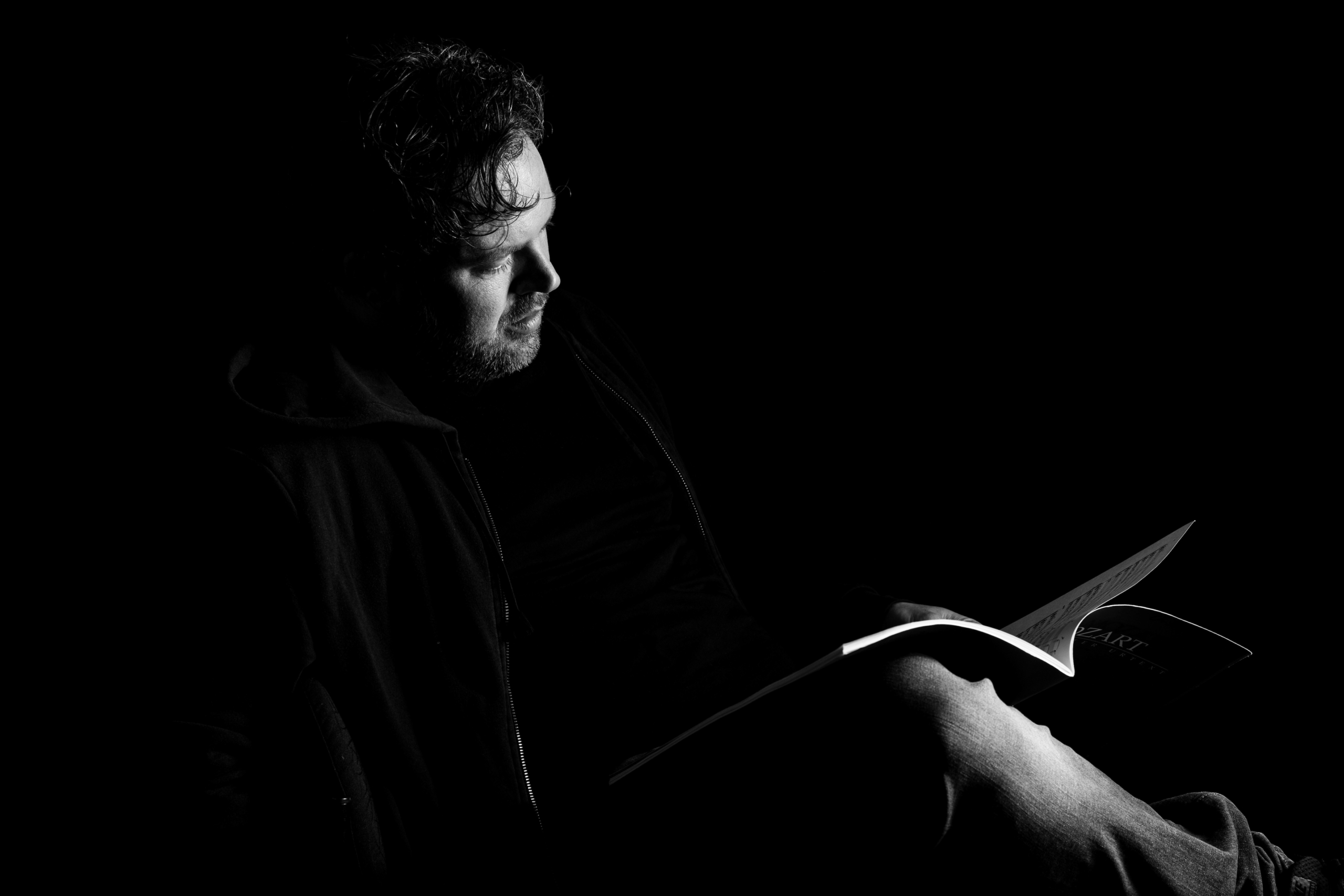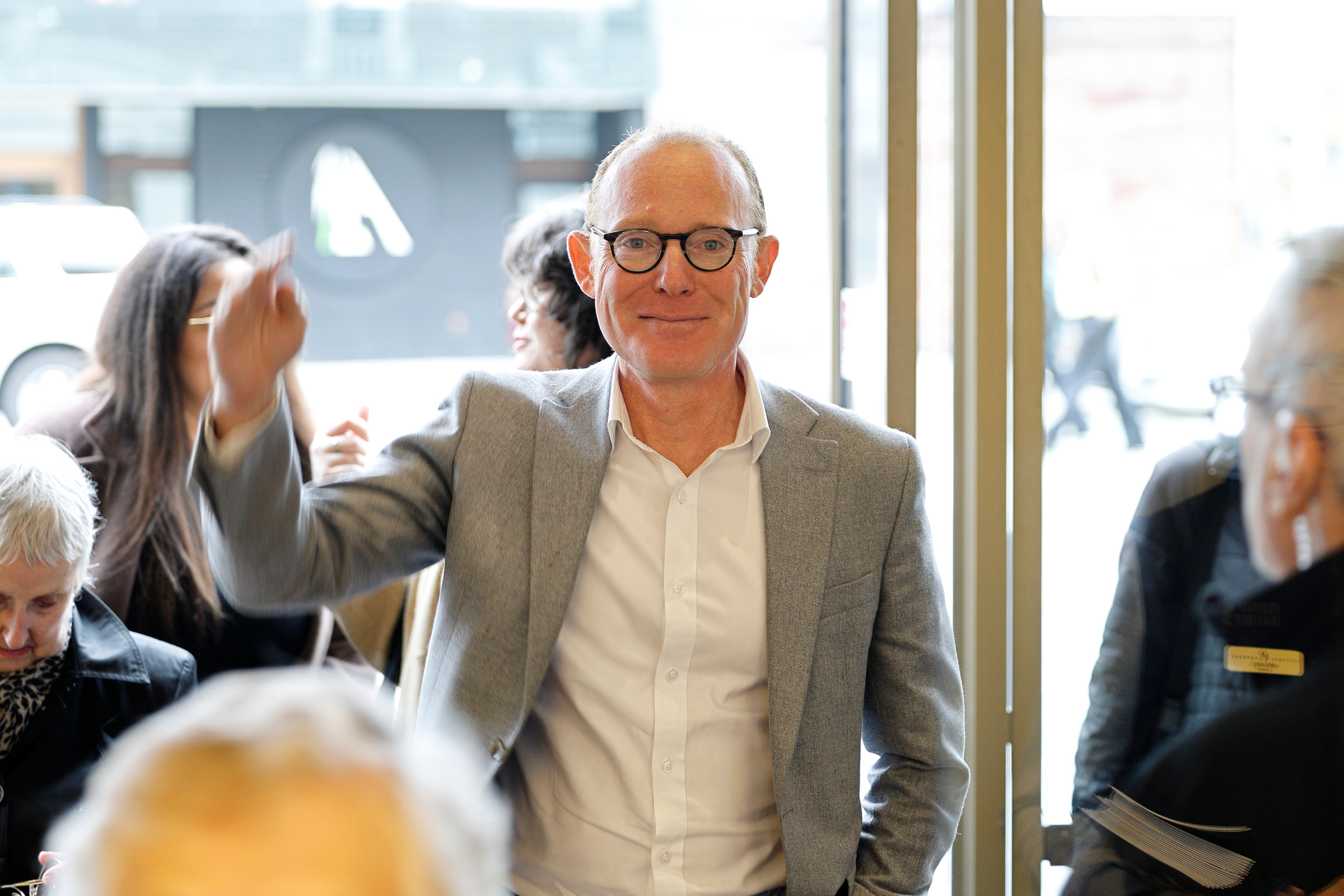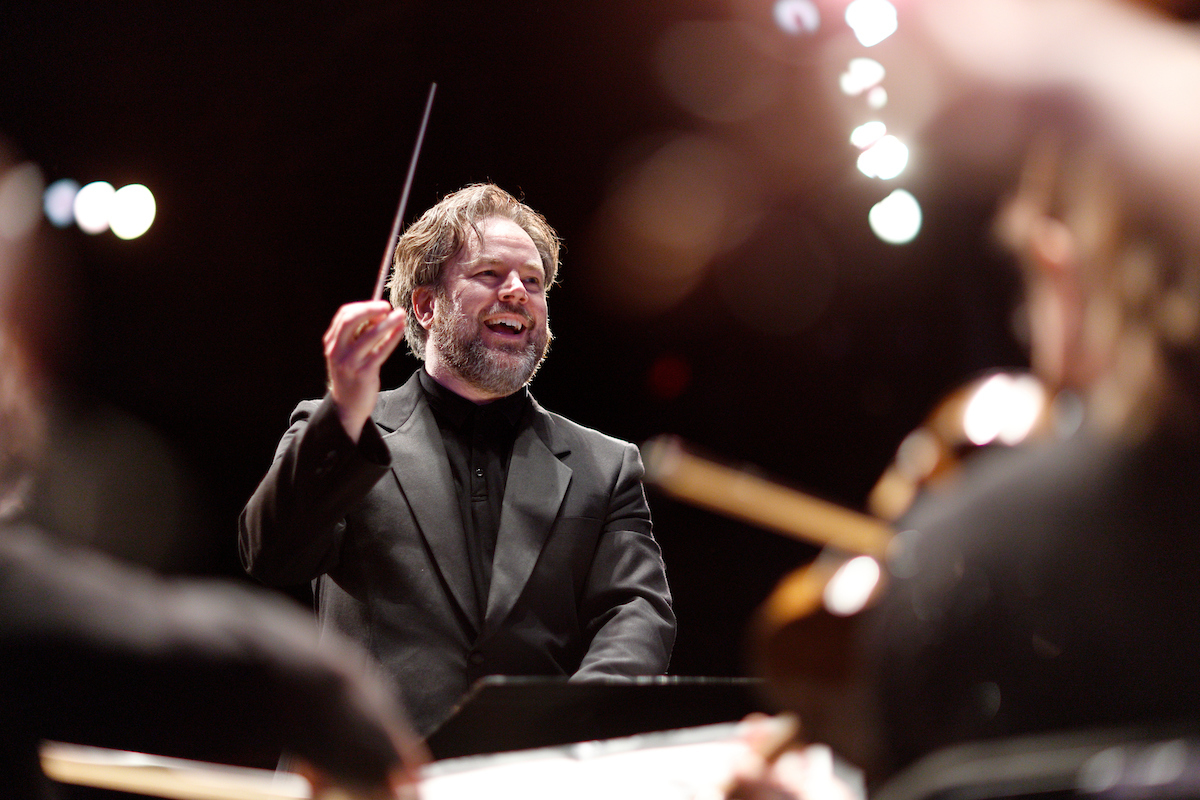Balancing the Bold with the Possible: Season Planning 101
by Rebecca Marchand
On September 8 2025, before the 2026/27 Season was presented to the Victoria Symphony’s Programming Committee for the first time, three of the orchestra’s key architects, Music Director Christian Kluxen, CEO Matthew White, and Principal Pops Conductor Sean O’Loughlin, sat down to reflect on how a season comes together.
For donors, subscribers, and audience members alike, the annual unveiling of a new season (usually in late February or early March) can feel like magic, a beautifully balanced journey of well-known (or soon-to-be) favourites, premieres, hidden gems, talented guest artists, and even the unexpected. But behind every season is a long and deeply collaborative process that blends imagination, logistics, and no small amount of courage.
A Season Begins with Ideas…and Emotions
For Christian Kluxen, programming isn’t something that starts on a particular date. “It’s something I never stop thinking about,” he says. “I’m always walking around thinking, what would be good together? What would fit in a concert?”
He likens the process to that of a chef building a menu, infinite possibilities that must somehow become a single meal. His file of notes and ideas, full of pieces and pairings that catch his ear, becomes the raw material for each new season. But what drives his choices most isn’t novelty, it’s meaning.
VS Music Director Christian Kluxen
Kluxen’s approach has reshaped the VS’s ‘Masterworks’ programming. Rather than creating concerts around a single theme or composer, he searches for emotional and conceptual connections that surprise the ear and expand perspective. “My focus is always to expand people’s view of music instead of narrowing it,” he explains. “I don’t want audiences to come expecting what they already know. I want them to walk out thinking, I never imagined those things could work together — but they did.”
He sees this as more than artistic curiosity; it’s a form of trust-building with audiences. “When people come to a concert and hear something new that moves them, they start to open their ears and hearts in a different way,” Kluxen says. “That’s where change happens: when you connect through emotion.”
That same philosophy led to one of the VS’s most significant recent changes: the move from a fixed subscription model to a flexible one. Working closely with Matthew White and the marketing team, Kluxen championed the idea that audiences should be free to curate their own concert experiences. “I didn’t want to put everything into boxes,” he explains. “Giving people choice invites them to take risks with us. They might not know every work they’re coming to hear, but they trust it will be good.”
The change has done more than make ticketing easier, it’s helped deepen the relationship between the VS and its audience. Trust and curiosity now define both the programming and how subscribers engage with it.
Vision Meets Structure
If Maestro Kluxen begins with creative instinct, CEO Matthew White’s role is to make that vision possible. “When I first arrived, I thought the right way to plan a season was to start with a budget,” he recalls with a smile. “But I’ve learned it’s better to start with ideas, to let Christian and Sean dream first and then figure out how to make it work.”
VS CEO Matthew White
White’s process is one of scaffolding: establishing broad parameters — the number of large-scale, mid-size, and smaller projects that might fit into a season — then stepping back to see what the artistic team envisions. “I tell them not to worry about the money right away,” he says. “Great ideas tend to attract audiences and support.”
Once a first draft of the season programming takes shape, the practical puzzle begins. Every hour in rehearsal, musician doubling, rented score, guest artist, and more must be budgeted, weighed, and balanced. That also means multiple iterations. In total, five or six drafts of the programming and budget will be gone through before the final season is settled. Sometimes artistic dreams meet real-world constraints. “For example, if we want to do Mahler’s Symphony No. 3, it requires an absolutely world class mezzo-soprano, so if we can’t find one for the date we have the theatre, we would have to make a change because the piece hinges on the soloist,” says White.
Throughout the process, White’s philosophy remains the same: lead with the art. “Our job is to create programs that offer many points of access,” he says. “No matter who you are, there should be something that speaks to you. That’s the challenge and the joy.”
Equally important is the collaborative nature of decision-making. The Programming Committee, which is composed of elected musicians alongside leadership from the artistic and marketing teams, meets regularly throughout the year to offer perspective and refinement. “It’s a very open, generative process,” White notes. “The point isn’t to dilute artistic vision, but to ‘yes-and’ it. Almost every meeting brings up something no one had thought of before.” And the musicians on the committee, agree. “We bring an important perspective,” they say “it’s really crucial to have that representation and valuable to everyone. We’re all a part of it.”
Flexibility, White adds, has become one of the VS’s defining strengths. “We’re an orchestra that can expertly play music from the Baroque period all the way up to bold contemporary music, fun popular music, and opera,” he says. “That adaptability extends beyond the stage. Whether it’s the programs we design or the way audiences choose them, flexibility has made us stronger.”
Finding the Pops Thread
While Maestro Kluxen and Matthew White are shaping one part of the season, Sean O’Loughlin is constructing a parallel world: the Pops season. “We usually start with a couple of tent-pole concerts: the holiday shows, the season opener, the big finale,” he explains. “Those anchor the year, and everything else builds out from there.”
Variety becomes the guiding principle. “The musicians here can play anything — classical, rock, jazz, film scores — and play it all at the highest level,” O’Loughlin says. “So I want to push that, and give our audiences that same range of experiences.”
VS Principal Pops Conductor Sean O’Loughlin
That range includes the VS’s popular Films in Concert series, where live orchestral performance and cinematic storytelling meet in packed theatres. But Maestro O’Loughlin also ensures the orchestra itself takes center stage. “I’m always advocating for the orchestra, so I’m adamant that at least one or two concerts have no guest artist,” he says. “It’s important that audiences experience the orchestra on its own, they’re the stars of the show.”
Planning the Pops season, is a balance of art and strategy. “We spread everything out so our audiences can go on a journey over the season,” O’Loughlin explains. “At the same time, if someone only wants to come for movies or Broadway or the holidays, that’s okay too. It’s about creating choice and connection.”
The collaboration between Maestro O’Loughlin, Matthew White, and the broader team mirrors the philosophy that guides the VS’s entire season design: flexibility, curiosity, and a shared commitment to quality. “We only put Really Good on stage,” O’Loughlin says simply. “That’s the standard.”
The Art of Collaboration
Across each of their perspectives runs a single thread — that programming is both creative and collective. “It’s like being an architect,” Kluxen says. “You start with a blank canvas, but it only becomes real when you bring in all the practicalities: the space, the structure, and the people who will live in it.”
The same could be said of the Symphony itself. From early brainstorming sessions to final budget approvals, the process blends artistry and administration, history and innovation. “It’s about balancing the bold with the possible,” White reflects. “You start with what you want to do, and through dialogue and trust, you get to what you can do, which often turns out to be something even better.”
From the outside, the end result may look like a polished season brochure, but what it represents is something far more dynamic: a living conversation between music, musicians, and the audience. “That’s really important,” O’Loughlin says “we’re always listening to our audiences and take them into account at every step.” Each program is a reflection of that dialogue, and of the trust between the Symphony and the people who make its work possible.
As Maestro Kluxen puts it, “Programming is really the essence of what we do. The music we choose defines who we are and how we connect with the world.”
*Thank you to VS community member Karla W for suggesting this topic.
Season Planning by the Numbers
From the first spark of inspiration to the moment the lights go up, season planning is a collaboration of artists, administrators, and musicians. Here’s what goes into bringing it all to life.
- Timeline: Planning for each new season begins at least 18 months in advance, from initial brainstorming to final approvals.
- Iteration: The draft season typically goes through five to six drafts before it’s finalized.
- Programming Committee: Nine members, representing artistic leadership, marketing, and elected musicians from across the orchestra, provide feedback and guidance throughout the process.
- Performance Weeks: VS presents 36 weeks of programming each year, including Concerts for Kids, Education Concerts, and community concerts.
- At Home & On the Road: The VS performs across Greater Victoria and southern Vancouver Island, from the Royal Theatre to Qualicum Beach, plus outdoor performances like Symphony SPLASH!
- Collaborators: Each season involves 42 core musicians, dozens of extra musicians, guest artists from across Canada and beyond, a small but dedicated administrative staff, local organizations like Pacific Opera Victoria and Dance Victoria, a dedicated army of volunteers, and Board of Directors.
- Process in a Nutshell: Imagination first, spreadsheets second.
Leave a Reply
Want to join the discussion?Feel free to contribute!






While I had some insight into the preparation of a season, I found this full explanation of how things are working and the philosophy behind the process informative and enjoyable to read. Many thanks to all who contribute to the process.
Great article, Rebecca!